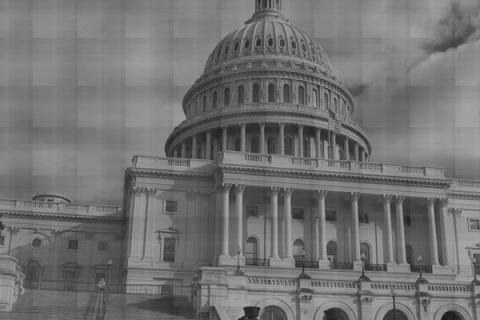Today the United States Supreme Court upheld the individual mandate in the Affordable Care Act. The Court held 5 to 4 that the mandate could not be upheld as part of Congress’s Commerce Clause powers. However, Chief Justice Roberts held for himself and thus the Court that the mandate was really “a play or pay” tax despite not being so labeled in the Affordable Care Act and therefore, Constitutional under the tax and spend clause.
The Court also held 7 to 2 that the Medicaid Expansion in the Act was unconstitutional if it was construed as mandating the loss of ALL Medicaid Funds for failure to participate in the Expansion. Instead, the Chief Justice construed the Act to provide that if states did not want to participate in the expansion, they were left as is. This interpretation was the one that Justices Breyer and Kennedy pushed for at Oral Argument. This was also the view that the late Justice Brennan had argued for many years ago in a highway funds case.
The use of the Commerce Clause as the dissenters argued would be a substantial overreach in terms of federal power and very-very dangerous. While the Government did argue off handedly for the “Tax and Spend for the General Welfare” justification, the opponents of the law also made an inane argument that the Commerce Clause could be used to make as a condition of access to health care the requirement that one buy insurance up front at the Emergency Room. Aside from the administrative nightmare of such a system it also directly raised moral issues in terms of the Hippocratic Oath and state and federal mandates as to Disproportionate Share Hospitals which is subsumed into “Let Them Die.” That argument probably convinced the Chief Justice to uphold the Act on a surer footing. The mandate was in fact rewritten in Bill 2 – a reconciliation bill which is used for “tax and spending” measures. As one Judge had noted, had people been upfront about this being a fiscal measure there would be no constitutional issue because it would akin to an argument over Social Security or Medicare.
The whole legal rationale for the “Tax and Spend for the General Welfare” Clause justification for the individual mandate was in fact noted in 2010 by Irwin J. Nowick in the California Progress Report. As its former Editor Frank Russo tweeted this morning that, “The ‘I’ was right on health care constitutional as tax&spend—read analysis in 4/27/10 article http://bit.ly/L44RfA spot on for #SCOTUS”. I have known Irwin since I was a child so his legal insight on this issue does not shock me. While Irwin may have some idiosyncrasies, no one has ever questioned his legal skills.
Chief Justice Roberts’s opinion in its main respects tracked what Irwin wrote. The Chief Justice also engaged in a discussion of what is a “Direct Tax” – an issue Irwin addressed in that 2010 posting. The Chief Justice noted that even if the mandate may reasonably be characterized as a tax, it must still comply with the Direct Tax Clause of the Constitution which prohibits capitation taxes. The Chief Justice noted that a tax on going without health insurance was not a capitation or other direct tax under the Court’s precedents. It therefore need not be apportioned so that each State pays in proportion to its population.
What has been left unsaid in the whole mandate discussion are three facts.
First, as some have noted, mandates have existed since the founding of the United States. The military draft was first instituted during the Civil War and when litigated was upheld by the United Supreme Court. See, e.g.:
Lichter v. United States, 334 U. S. 742, 334 U. S. 756 (1948); Selective Draft Law Cases, 245 U. S. 366 (1918) In fact, one of the first mandates in this Country was gun ownership. As Yale Law professor Akhil Reed Amar has noted, the 1792 Militia Acts which essentially mandated gun ownership.
Secondly, there is the issue of personal responsibility – something that people overlook. Many members of the younger and healthier Gen X and Millenials who can afford health insurance choose instead to buy iPads and Droids. Naturally, this causes the 'per person' cost of insurance for the pool of insured that remain to increase. It so happens that the “Age 26 provision” in the Act helps Generation X purchase more iPads, even though the cause for this provision is caused by my generation's wait-until-there-is-an-emergency attitude.
Some had argued that market based reforms would solve the health care problem. But they would not. The reason the market did not work as well as the free-market philosophy would like is evidenced by the history in Massachusetts. In the mid-1990s, Massachusetts along with several other northeastern states passed insurance market reforms similar to those in the Affordable Care Act. The reforms eliminated or restricted the ability of insurance companies to discriminate against the ill via price hikes or coverage exclusions. The result in each state was the same; very high non-group insurance prices. Insurance companies worried that only the sick would enroll, and, priced their products accordingly. However, once the Massachusetts mandate took effect, rates dropped exponentially as the insurance pool expanded to included less risky patients.
Third, there is an unfairness that needs to be looked at that health insurance paid by individuals (if not business related) are not tax-deductible. If they were, maybe some of our younger generation would be incentivized to purchase it without the need of a mandate.
Could there be a more "free market solution?" Maybe. But if there is, the "small government" GOP failed to offer it. In the meantime, the mandate remains under the tax & spend clause authority of the Constitution, just as Irwin predicted.

